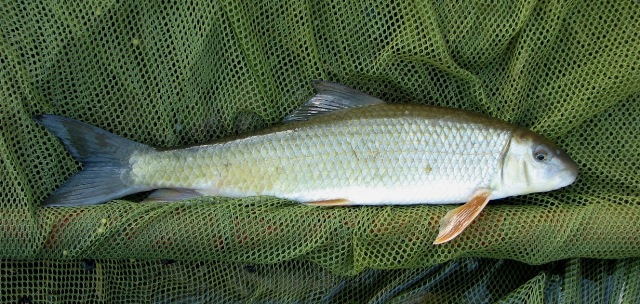Black Redhorse
(Moxostoma duquesnei)

The black redhorse is one of seven species of redhorse suckers found in Ohio. They are large bottom feeding fish that are often mistaken for carp. However these fish, unlike carp, are indicators of a healthy river system and are native to the state of Ohio.
Description
The black redhorse is gray or brownish-olive with silvery sides and a slate gray tail. Their dorsal fin is slightly concave (curves in toward body). The rear edge of the black redhorse lips forms a straight line. There are 44-47 scales found along their lateral line. The black redhorse is more long and slender in appearance than the golden redhorse. The back edge of the lips of a Golden Redhorse form a slight "V" and they have 39-42 scales along their lateral line. Silver Redhorse are very deep bodied, the rear edge of their lower lips form a deep "V", and have a convex (outwardly rounded) dorsal fin. Ohio's other four species of redhorse have red tails.
Habitat and Habits
Black redhorse are native to Ohio and are found statewide. They inhabit swift flowing portions of moderate or large-sized streams with clear water. Preferred substrates include, gravel, bedrock or sand. Black redhorse are less tolerant of low gradients, turbidity, and siltation than golden redhorse. They are an indicator of good water quality. Young redhorse feed in schools near emergent aquatic vegetation near the edge of pools. Adult black redhorse usually feed in schools just above or below a riffle moving slowly over the bottom. Adults and young alike feed by filtering through the substrate for snails, insect larvae, and other aquatic invertebrates.
Reproduction and Care of the Young
Black redhorse spawn in late April. The eggs are buried in a substrate of fine rubble, sand, and gravel in water between 6 and 24 inches deep. This usually occurs at the top or bottom end of a riffle.